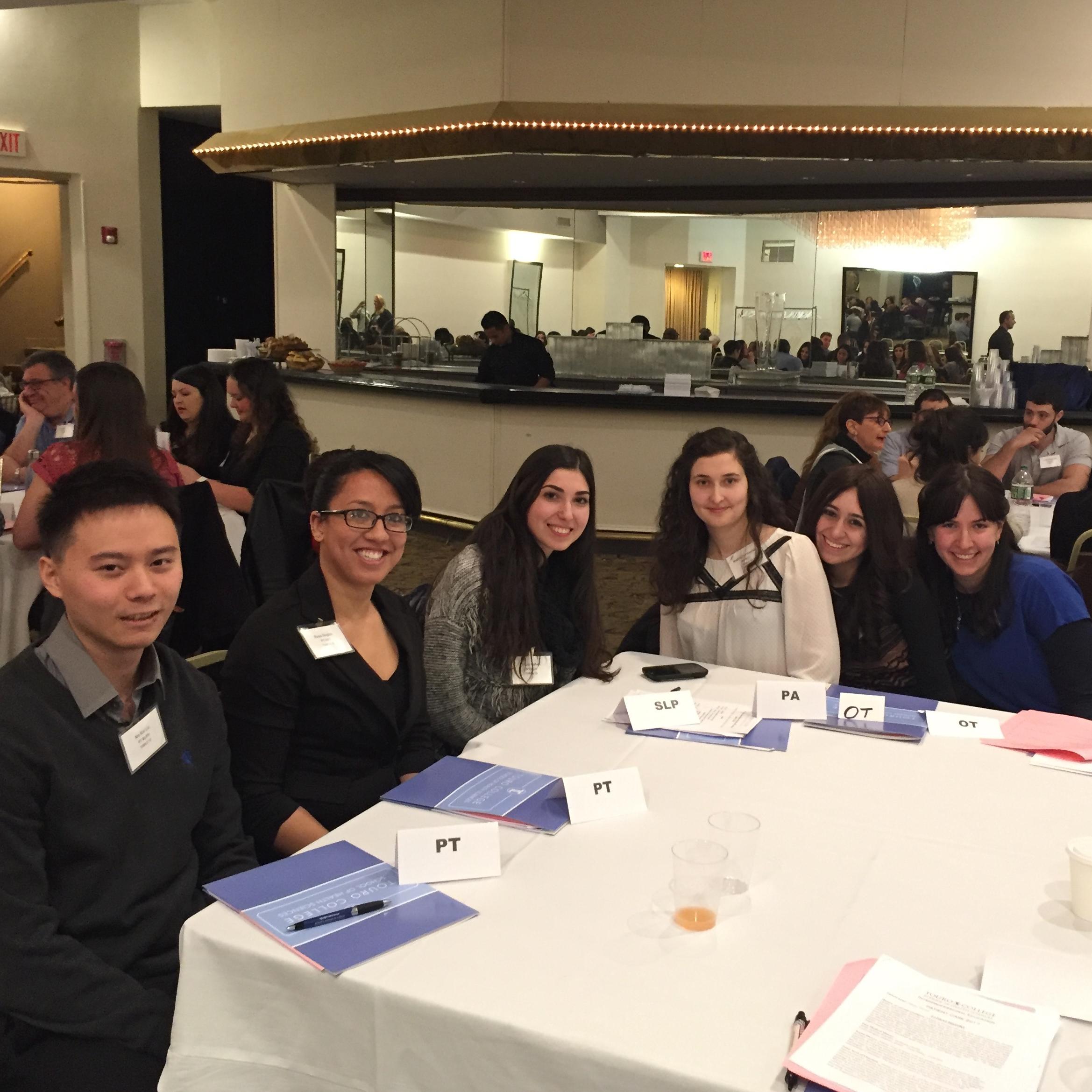Students Learn to Work Together at 4th Annual Interprofessional Educational Symposium
Sponsored by Touro College School of Health Sciences the Symposium Stresses Team-Based Approach to Patient Care

The patient, Manny, was a 23-year-old obese male on the autism spectrum who had been hospitalized. After a recent car accident that broke bones in his right leg and wrist, his limited communication skills had become impaired; he spent most of the time in his hospital bed, curled up in a fetal position. As a member of an interdisciplinary medical team, what is the best course of treatment?
That was the question posed to 350 students, clinicians and faculty members at Touro College School of Health Sciences (SHS) fourth annual Interprofessional Educational Symposium held on March 21 at Congregation Sons of Israel in Woodmere, NY. Participants included students and faculty from Touro’s Doctor of Physical Therapy, Occupational Therapy, Nursing, Speech Language Pathology, and Physician Assistant Programs. And while the patient was fictional, everything the students learned about working together in an interdisciplinary team was real.
“We’re a community of professionals,” said SHS occupational therapy professor Dr. Alex Lopez. “Today is about unity in treating a patient… We don’t work in silos; we don’t practice in a vacuum… We work together to make a difference for our patients where they are now and where they will be in the future.”
“Interprofessional care is the key to safe, high-quality, accessible patient-centered care,” stated Dr. Steven Blaustein, a professor at SHS’s Speech Language Pathology program.
In his remarks, Dr. Blaustein stressed the patient’s autism diagnosis and noted the increasing number of children diagnosed with autism spectrum disorder. Adults and older adolescents with autism spectrum disorder, Dr. Blaustein noted, are frequently referred to as “forgotten patients” because of the lack of training medical professionals have in dealing with them.
“Once patients [with autism spectrum disorder] leave pediatricians’ offices they struggle seeking healthcare as adults,” said Dr. Blaustein. ““They are more likely to live in poverty and have lower incomes; they have less access to quality medical care.”
A special guest speaker, Michael, an adult with autism who works at Staples, spoke about his own life and challenges.
“I never thought of myself as having a disorder,” Michael stated. He credited the occupational therapy and speech therapy with enabling him to fulfill his dream of working with computers. “I sometimes get stuck on topics and have to focus on the conversation at hand. Speech therapy helped me pay attention to what people are saying.”
Speech Language Pathology student Joanna Zou said she was happy to be at the event. “I see myself at the hospital where I’ll work with different practitioners as part of a team,” she explained. “It’s important to get this experience before I start working.”
Nursing student Yehuda Shoob said that he enjoyed working with a team.
“It’s about learning to work together,” he said.
As part of the symposium, students formed teams in the ballroom and came up with treatment options for Manny. Speech language pathology student Areini Arzu recommended replacing Manny’s assisted communication device with a picture board to help him communicate. Nursing student David Mayteles asked if the hospital’s lighting might be affecting Manny’s comprehension. A physical therapy student spoke about the need to get Manny to ambulate. Facilitator Julia Kardachi gently guided the students to ask about Manny’s learning process inside the hospital.
Third-year PT student Avi Friedman called it an “eye-opening” and “enlightening” experience.
“I have newfound respect and clarity about the scope of each of the domains of the represented professions,” he said. “I also have a new appreciation for patient-centered care and understand why having a team comprised of professionals across the spectrum is invaluable in delivering better patient-care and improved outcomes.”

